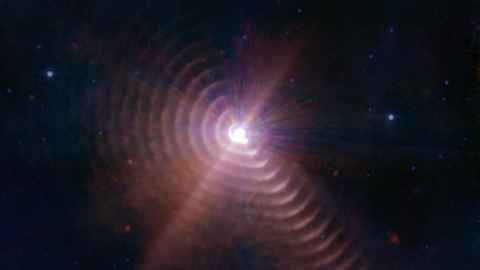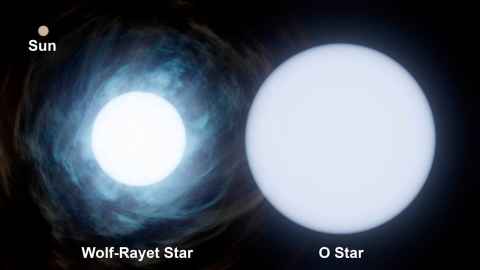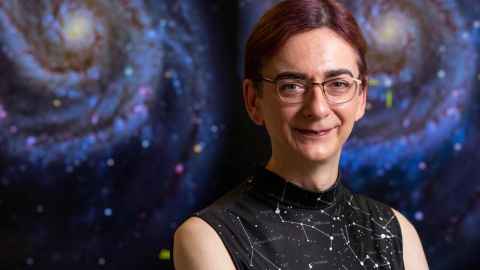Astrophysicist decodes rings of stardust in outer space
13 October 2022
Striking images show what happens when two stars' winds collide, says Dr Jan Eldridge.

Astrophysicist Jan Eldridge had seen images of dust rings around stars – but never anything like this.
The head of the Department of Physics at the University of Auckland is part of the international team of scientists decoding remarkable images from NASA’s James Webb Space Telescope.
The world’s most powerful telescope captured images of at least 17 concentric dust rings emanating from a pair of stars orbiting around each other more than 5,000 light-years from Earth. The rings are enormous, bigger than our solar system, and indicate the passage of time, similar to the rings in a tree. The bright area at the centre of the image contains both of the stars.
“What’s amazing is just how regular the rings are, like nothing I’ve ever seen,” says Dr Eldridge.

Vast amounts of dust are generated about every eight years when the two stars’ eccentric orbits bring them close enough together for their winds, streams of gas, to collide. The compressed gas forms dust similar in size to the particles in cigarette smoke, Dr Eldridge says.
The binary star system is called Wolf-Rayet 140.
One of the stars, a Wolf-Raynet star, is hot, very old, dying and almost pure carbon, that essential ingredient of life. The other is an O-type star, one of the most massive star types known.

“The carbon-rich dust that’s thrown off into space to form these rings will eventually mix with other gas and dust in the galaxy with the potential of creating new planets,” says Dr Eldridge. “Understanding the production of carbon from stars is another piece in the puzzle of working out how everything is made in the universe.”
Dr Eldridge is one of the co-authors from around the world of an article published in Nature Astronomy, “Nested dust shells around the Wolf–Rayet binary WR 140 observed with JWST.”
Media contact
Paul Panckhurst | media adviser
M: 022 032 8475
E: paul.panckhurst@auckland.ac.nz